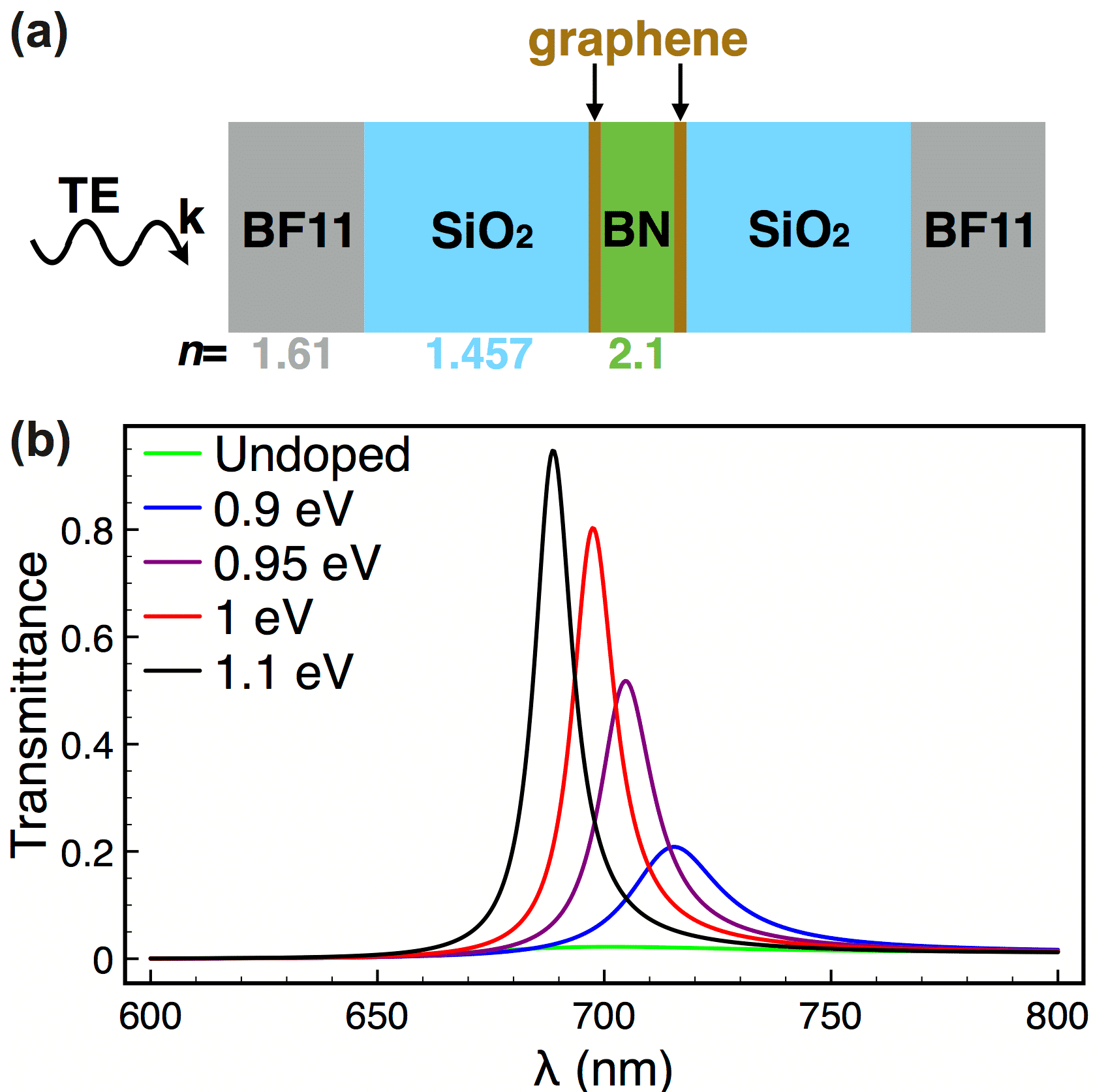
Visible Light Modulation with Graphene
Fast modulation and switching of light at visible and near-infrared (vis-NIR) frequencies is of utmost importance for optical signal processing and sensing technologies. No fundamental limit appears to prevent us from designing wavelength-sized devices capable of controlling the light phase and intensity at terahertz speeds in those spectral ranges. However, this problem remains largely unsolved, despite recent advances in the use of quantum wells and phase-change materials for that purpose.
Here, we explore an alternative solution based upon the remarkable electro-optical properties of graphene. In particular, we predict unity-order changes in the transmission and absorption of vis-NIR light produced upon electrical doping of graphene sheets coupled to realistically engineered optical cavities. The light intensity is enhanced at the graphene plane, and so is its absorption, which can be switched and modulated via Pauli blocking through varying the level of doping. Specifically, we explore dielectric planar cavities operated under resonant tunneling transmission conditions, as well as Mie modes in silicon nanospheres and lattice resonances in metal particle arrays. Our simulations reveal absolute variations in transmission ∼ 90% using feasible material parameters, thus supporting the use of graphene for fast electro-optics at vis- NIR frequencies.
References
[1] R. Sainidou, et al., Nano Lett 10, 4450 (2010).
[2] F. J. García de Abajo, Acs Photon. 1, 135 (2014).

We present a planar multilayer structure considered for resonant tunneling light transmission, including a central BN planar waveguide (not to scale) and two single-layer graphene films intercalated at the BN/SiO2 interfaces. We show that transmission spectra of the multilayer structure at an incidence angle of 71 degrees for different levels of doping. At a wavelength of 689 nm, transmittance can be tuned from 95% to almost 0.
renwen.yu@icfo.es
Powered by Eventact EMS